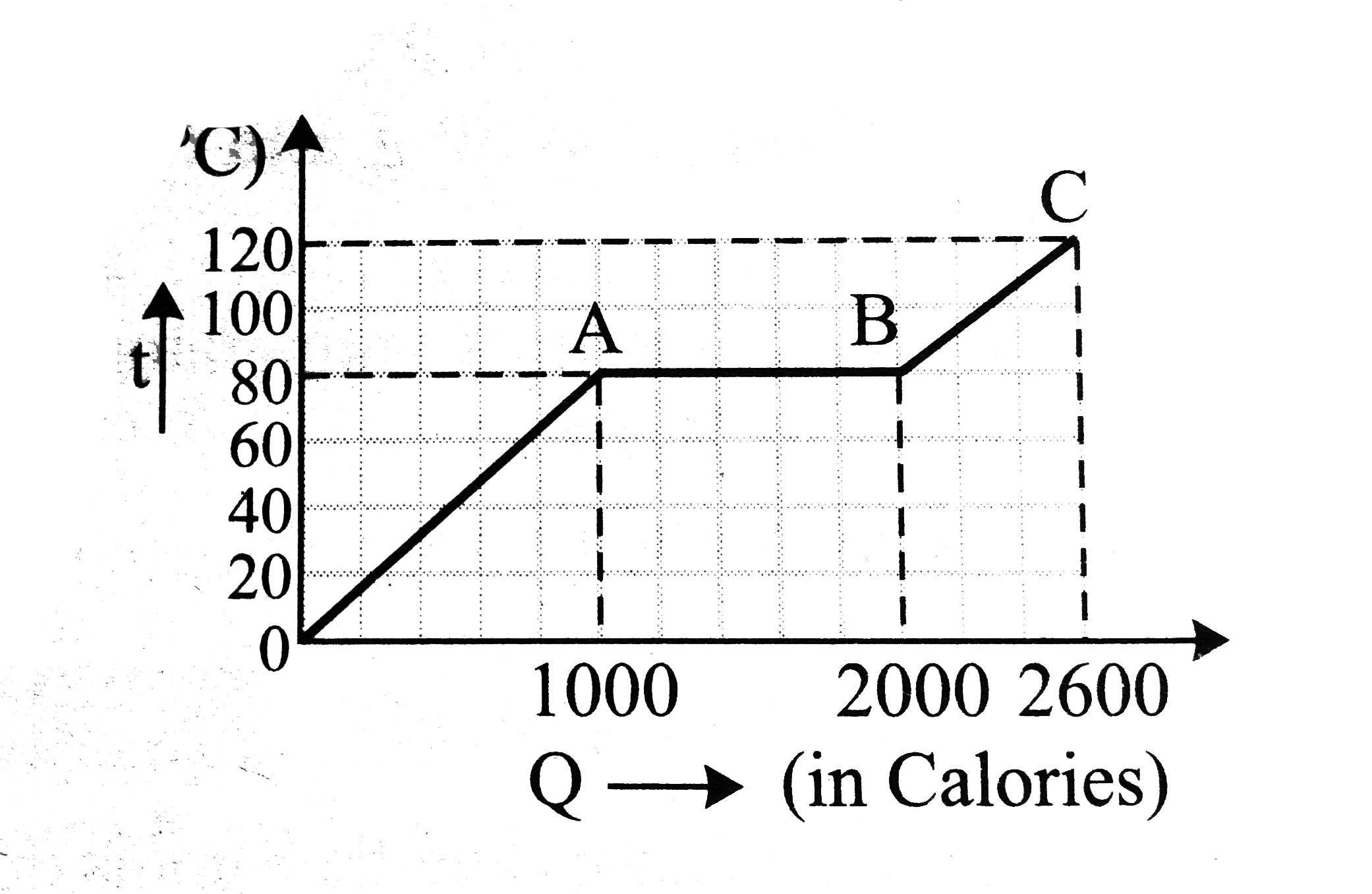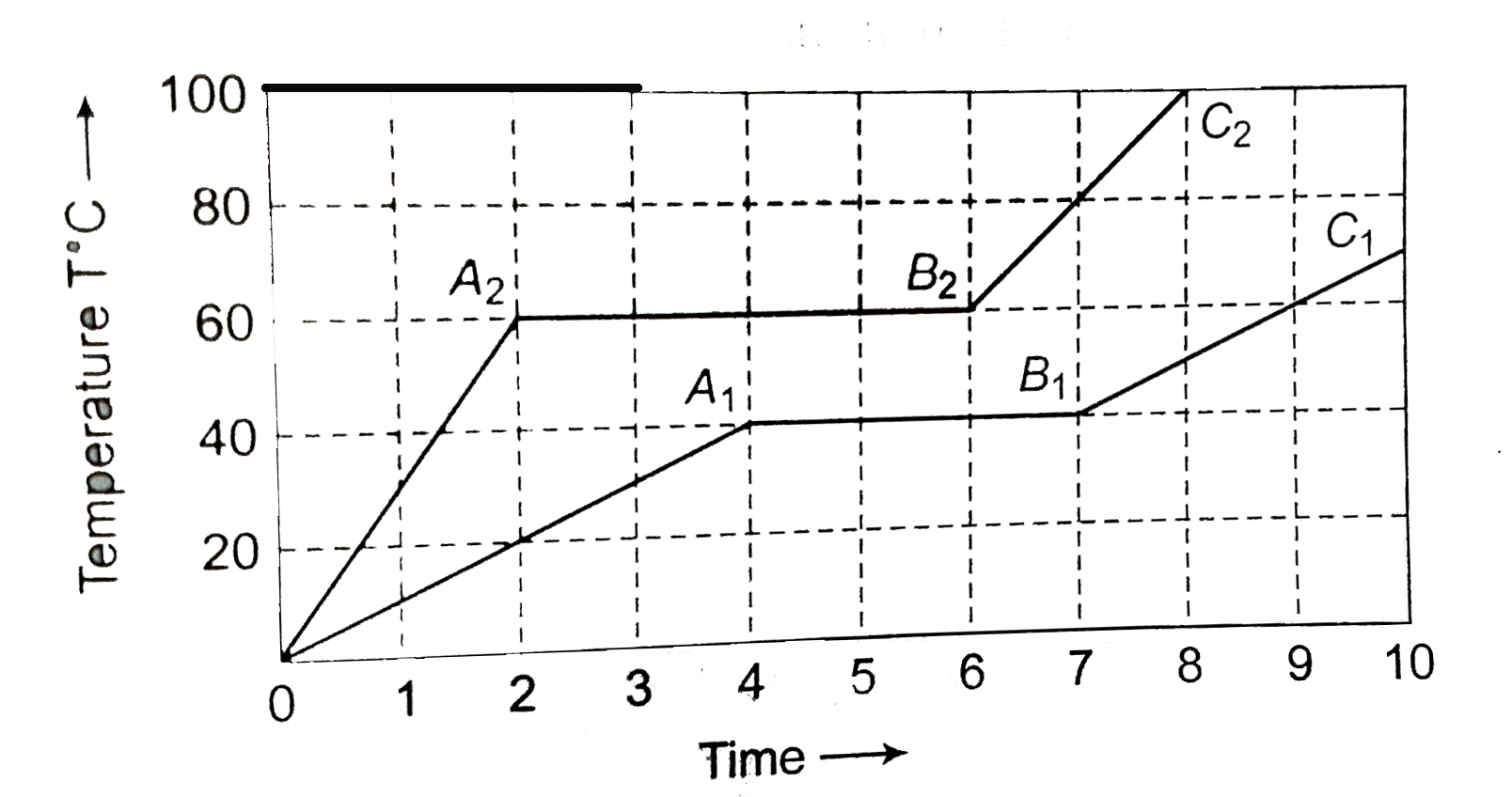A substance of mass M kg requires a power input of P wants to remain in the molten state at its melting point. When the power source is turned off, the sample completely solidifies in time t seconds. The latent heat of fusion of the substance is …….
Pmt
Ptm
mPt
tPm
The correct Answer is:B
Heat lost in tsec=mL or heat lost per sec = mLt. This must be the heat supplied for keeping the substance in molten state per sec.
∴mLt=PorL=Ptm.
Topper's Solved these Questions
- BOOK - A2ZCHAPTER - THERMAL PROPERTIES OF MATTEREXERCISE - AIIMS Questions28videos
THERMAL PROPERTIES OF MATTER
- BOOK - A2ZCHAPTER - ROTATIONAL DYNAMICSEXERCISE - Chapter Test29videos
ROTATIONAL DYNAMICS
- BOOK - A2ZCHAPTER - UNIT, DIMENSION AND ERROR ANALYSISEXERCISE - Chapter Test28videos
UNIT, DIMENSION AND ERROR ANALYSIS
Similar Questions
A calorimeter of water equivalent 10×10−3kg is filled with 70×10−3kg of a substance at its melting point. The substance is found to solidify completely in 21 minutes. A similar calorimeter containing 80×10−3kg of water at the same temperature cools at the rate of 1.5∘C per minute, the room temperature being the same in both cases. What is the latent heat of fusioin of the substance? (Specific heat capacity of water =4200Jkg−1K−1)
View Solution
A substance is in the solid form at 0∘C. The amount of heat added to this substance and its temperature are plotted in the following graph. If the relative specific heat capacity of the solid substance is 0.5, find from the graph (i) the mass of the substance, (ii) the specific latent heat of the melting process and (ii) the specific heat of the substance in the liquid state.
Specific heat capacity of water =1000cal/kg/KView Solution
Knowledge Check
- Question 1 - Select One
A substance of mass M kg requires on input power P J/s to remain in the molten state its melting point. When the power source is turned off the sample completely solidifies is
A2PtMBPt2MCPtMDPMt - Question 2 - Select One
A given substance of mass 'm' is in solid state at certain temperature. Arrange the following steps in proper sequence to calculate the total heat energy required to just convert the substance completely into gaseous state.
(A) Note down the specific latent heat of vapor ization of the substance and calculate the heat supplied to convert from liquid to gaseous state using the formula.
(B) Note down the melting point of the substance and calculate the heat supplied to increase the temperature of the solid to its melting point.
(C ) Note down the boiling point of the substance and calculate the heat supplied to increase the temperature of the substance from melting point to its boiling point.
(D) Add all the heat energies, it gives the resultant heat supplied to the solid to just convert it into gaseous state.
(E) Note down the specific latent heat of fusion of the substance and calculate the heat supplied to convert the substance from solid state to liquid state.AB D E C ABA C E D BCA B C D EDB E C A D - Question 3 - Select One
A ginven substance of mass 'm' is in solid state at certain temperature. Arrange the following steps in proper sequence to calcualte the total heat energy required to just convert the substance completely into gaseous state.
(a). Note down the specific latent heat of vaporization of the substance and calculate the heat supplied to convert from liquid to gaseous state using the formula.
(b) Note down the melting point of the substance and calculate the heat supplied to increase the temperature of the solid to its melting point.
(c) Note down the boiling point of the substance and calculate the heat supplied to increase the temperature of the substance from melting point to its boiling point.
(d). Add all the heat energies, it gives the resultant hea supplied to the solid to just convert it into gaseous state.
(e) Note down the specific latent heat of fusion of the substance and calculate the heat supplied to convert the substance from solid state to liquid state.Ab d e c aBa c e d bCa b c d eDb e c a d
One end of a uniform rod of length 1m is placed in boilling water while its other end is placed in boiling water while its other end is placed in melting ice A point P on the rod is maintained at a constant temperature of 800∘C mass of stam produced per second is equal to the mass of ice melted per second. is equal to mass of ice melted per second If specific latent heat of steam is 7 times the specific latent heat of ice, then the distance of P from the steam chamber is n/18 m Find the value of n ? .
View SolutionOne mole of a uniform rod of length 1 m is placed in boiling water while its other end is placed in melting ice A point P on the rod is maintained at a constant temperature of 800∘C. The mass of steam produced per second. Is equal to the mass of ice melted per second. If specific latent heat of steam is 7 times the specific latent heat of ice, then distance of P from the steam chamber is n/18m . Find the value if n ?
View SolutionOne end of a uniform rod of length 10m is placed in boiling water while its other end is placed in melting ice. A point P on the rod is maintained at a constant temperature of 450∘C. The mass of steam produced per second is equal to the mass of ice melted per second. If specific latent heat of steam is 7 times the specific latent heat of ice, the distance of P from the steam chamber must be___________(in m)
View SolutionOne end of a copper rod of uniform cross-section and of length 3.1 m is kept in contact with ice and the other end with water at 100°C . At what point along it's length should a temperature of 200°C be maintained so that in steady state, the mass of ice melting be equal to that of the steam produced in the same interval of time. Assume that the whole system is insulated from the surroundings. Latent heat of fusion of ice and vaporisation of water are 80 cal/gm and 540 cal/gm respectively
 View Solution
View Solution
Two bodies of equal mass m are heated at a uniform rate under identical condition. Their change in temperature are shown. Then
(i) The ratio of melting point of the substances is 1.5
(ii) the ratio of their latent heats is 0.75
(iii) the ratio of specific heat of two substances is 0.33 in solid state
(iv) the ratio of specific heat of two substances is 2 in liquid state.View Solution

